
Find Help
More Items From Ergsy search
-

Which factor sunscreen should I use?
Relevance: 100%
-

Can I use expired sunscreen?
Relevance: 80%
-

Does sunscreen expire?
Relevance: 68%
-

Which sunscreen should I use?
Relevance: 64%
-

Do I need sunscreen on cloudy days?
Relevance: 63%
-

How often should I reapply sunscreen?
Relevance: 63%
-

Can makeup with SPF replace sunscreen?
Relevance: 60%
-

What's the difference between chemical and physical sunscreens?
Relevance: 58%
-
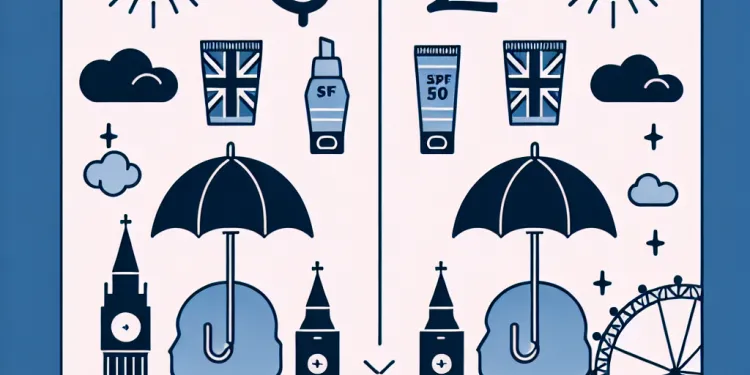
How does sunscreen with SPF 20 compare to SPF 50?
Relevance: 53%
-

Should I use a different SPF for my face and body?
Relevance: 49%
-

What SPF should I use if I have sensitive skin?
Relevance: 49%
-

What SPF should I use if I am going to be outdoors all day?
Relevance: 47%
-
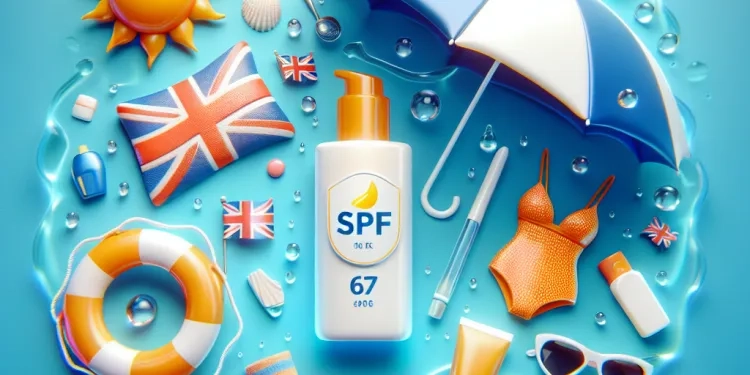
Do I need a different SPF for water-related activities?
Relevance: 36%
-

What are the risk factors for thrombosis?
Relevance: 36%
-

Is a higher SPF always better?
Relevance: 34%
-

What SPF level is recommended to prevent sunburn?
Relevance: 34%
-
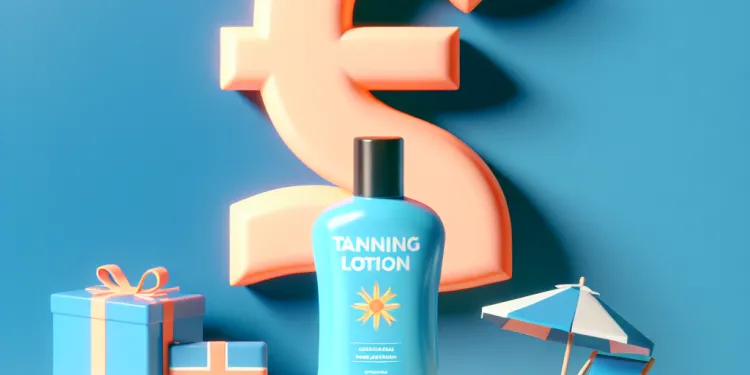
Does tanning lotion prevent sunburn?
Relevance: 34%
-

What does SPF stand for?
Relevance: 33%
-

What are the risk factors for a heart attack?
Relevance: 33%
-

Are there cultural factors in binge drinking?
Relevance: 33%
-

What are the risk factors for bowel cancer?
Relevance: 33%
-

Are there any societal factors that contribute to obesity?
Relevance: 32%
-
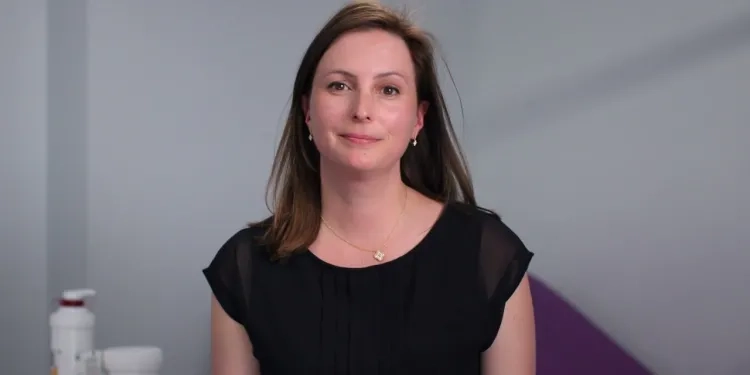
Factors that trigger eczema in your child
Relevance: 32%
-

What are risk factors for developing sleep apnea?
Relevance: 31%
-

Is SPF 15 enough for everyday use?
Relevance: 31%
-

What factors increase my risk of colorectal cancer?
Relevance: 31%
-
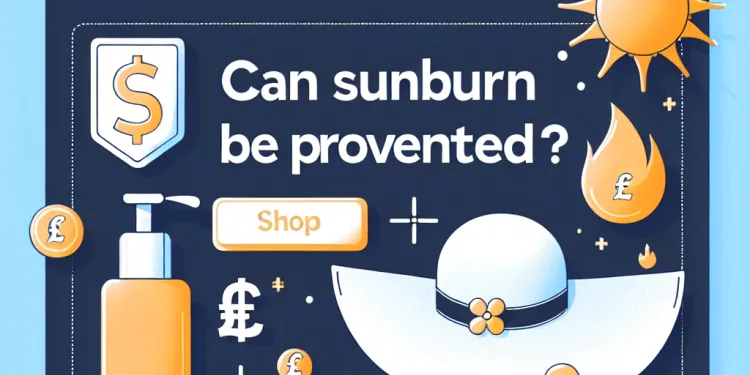
Can sunburn be prevented?
Relevance: 30%
-

What factors can influence cortisol levels?
Relevance: 29%
-

What factors influence changes to the energy price cap?
Relevance: 29%
-

What demographic factors influence changes to the state pension age?
Relevance: 27%
-

Is there a sunscreen that protects against all UV radiation?
Relevance: 26%
-

Why do some people not burn as easily as others?
Relevance: 26%
-

What factors influence the difference in electricity prices among UK energy companies?
Relevance: 26%
-

Are there any risk factors for appendicitis?
Relevance: 26%
-

Are there any dietary factors that influence GLP-1 secretion?
Relevance: 26%
-

Can dark-skinned individuals get sunburned?
Relevance: 25%
-
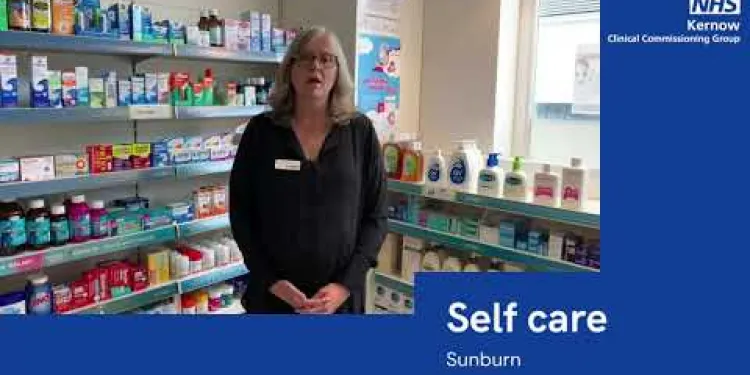
Self care - sunburn
Relevance: 25%
-

Is there any scientific evidence that links paracetamol use to autism?
Relevance: 25%
-

Are there any other factors in coffee that may affect blood pressure?
Relevance: 25%
-

Is blue light from screens a factor in affecting sleep quality?
Relevance: 25%
Understanding Sunscreen SPF
Sun Protection Factor, commonly known as SPF, is a measure of how well a sunscreen can protect your skin from harmful UVB rays, which are the main cause of sunburn and contribute to skin cancer. In the UK, choosing the right sunscreen SPF depends on several factors, including skin type, the time of year, and how much time you plan on spending outdoors.
Skin Type and SPF
Your skin type is crucial in determining the appropriate SPF for your sunscreen. For those with fair or sensitive skin that tends to burn easily, a higher SPF of at least 30 to 50 is recommended. People with medium to darker skin tones, which are less prone to burning, might find that an SPF of 15 to 30 provides adequate protection. However, it's essential to bear in mind that all skin types can be damaged by the sun, so selecting a suitable SPF is important for everyone.
Weather and Seasons
In the UK, the intensity of the sun varies with the seasons. During the late spring and summer months, when the sun is at its strongest, opting for a higher SPF of 30 or above is advisable if you are spending time outdoors. During the autumn and winter months, when the sun's rays are less intense, a lower SPF, such as SPF 15, might suffice for everyday activities. However, outdoor activities like skiing may still require higher SPF due to sun reflection off the snow.
Outdoor Activities and Duration
The duration and nature of your outdoor activities should also influence your choice of sunscreen. If you are planning to stay outside for extended periods, such as attending a festival or a beach day, a higher SPF like 30 or 50 offers more prolonged protection. It's also wise to reapply sunscreen every two hours, or more frequently if you are swimming or sweating.
UVA and UVB Protection
While SPF measures UVB protection, it's important to choose a broad-spectrum sunscreen that also protects against UVA rays, which contribute to premature skin aging and skin cancer. Check the label to ensure the sunscreen provides both UVA and UVB protection, often denoted by a 'UVA' circle logo on the packaging.
Conclusion
Selecting the correct SPF involves considering your skin type, the season, and your planned activities. A broad-spectrum sunscreen with an appropriate SPF can help protect against skin damage, preventing both sunburn and long-term harm caused by the sun’s rays. Remember to apply it generously and regularly for it to be effective. Consult a healthcare or dermatology professional if you are unsure about which SPF is right for you, especially if you have specific skin conditions or sensitivities.
Understanding Sunscreen SPF
SPF stands for Sun Protection Factor. It tells you how well sunscreen protects your skin from the sun. The sun has rays called UVB that can burn your skin and cause skin cancer. In the UK, picking the right SPF depends on your skin, the time of year, and how long you'll be outside.
Skin Type and SPF
Your skin type helps decide what SPF you need. If you have fair or sensitive skin that burns easily, use a higher SPF like 30 to 50. People with darker skin that doesn't burn as easily might use SPF 15 to 30. But all skin can be hurt by the sun, so everyone needs some protection.
Weather and Seasons
In the UK, the sun is stronger in late spring and summer. During these times, use a higher SPF like 30 or more if you're outside a lot. In autumn and winter, the sun is less strong, so SPF 15 might be enough for daily activities. But activities like skiing may need higher SPF because of sun reflecting off the snow.
Outdoor Activities and Duration
Think about what you're doing and how long you'll be outside. If you're out for a long time, like at a festival or beach, higher SPF like 30 or 50 is better. Remember to put on more sunscreen every two hours, or more often if you're swimming or sweating.
UVA and UVB Protection
SPF looks at UVB protection, but you also need to be protected from UVA rays. UVA rays can make your skin age and can also cause skin cancer. Pick a sunscreen that says it protects against both UVA and UVB. Look for a 'UVA' circle logo on the bottle.
Conclusion
Choose the right SPF by thinking about your skin type, the season, and what you'll be doing. Use sunscreen that protects from both UVA and UVB. This helps stop sunburn and other skin damage. Put on lots of sunscreen and use it often so it works well. If you're not sure which SPF to use, ask a doctor or skin expert for help.
Frequently Asked Questions
What does SPF stand for?
SPF stands for Sun Protection Factor, which measures how well a sunscreen protects against UVB rays.
How do I choose the right SPF for daily use?
For daily use, an SPF of at least 30 is recommended as it blocks about 97% of UVB rays.
Is a higher SPF always better?
Higher SPF offers more protection, but no sunscreen blocks 100% of UVB rays. SPF 30 blocks 97%, while SPF 50 blocks about 98%.
What SPF should I use if I have sensitive skin?
If you have sensitive skin, choose a sunscreen with at least SPF 30, and look for products labeled as suitable for sensitive skin.
What SPF is recommended for fair skin?
Fair-skinned individuals are advised to use a sunscreen with an SPF of 30 or higher.
Should I use a different SPF for my face and body?
Facial skin is more sensitive, so consider using a higher SPF or a special formulation for the face. SPF 30 or more is adequate for both.
Is SPF 15 enough for everyday use?
SPF 15 is generally enough for minimal sun exposure, but using SPF 30 or higher is better for more protection.
What SPF is best for children?
For children, an SPF of at least 30 is recommended, and it should be broad-spectrum to protect against UVA and UVB rays.
Do I need a different SPF for water-related activities?
Yes, choose a water-resistant sunscreen with SPF 30 or higher for swimming or sweating.
How often should I reapply sunscreen?
Reapply sunscreen every two hours, or more often if swimming, sweating, or towel-drying.
Is there a sunscreen that protects against all UV radiation?
Broad-spectrum sunscreens protect against both UVA and UVB rays. Look for this label regardless of SPF.
What SPF should I use if I am going to be outdoors all day?
SPF 50 or higher is advised if you'll be outdoors for extended periods.
Can makeup with SPF replace sunscreen?
Makeup with SPF can be an additional layer of protection, but it's usually not enough on its own. Use a separate sunscreen underneath.
How does sunscreen with SPF 20 compare to SPF 50?
SPF 20 blocks about 95% of UVB rays, while SPF 50 blocks about 98%. The difference is small but can be important for sensitive skin.
What SPF should I use if I have darker skin?
Darker skin can still get damaged by the sun, so an SPF of at least 30 is recommended for adequate protection.
Do I need sunscreen on cloudy days?
Yes, UV rays penetrate clouds, so wearing an SPF of at least 30 is advised even on cloudy days.
What are UVA and UVB rays?
UVA rays penetrate the skin more deeply and contribute to aging, while UVB rays cause sunburn. Both can lead to skin cancer.
What's the difference between chemical and physical sunscreens?
Chemical sunscreens absorb UV radiation while physical sunscreens (mineral) reflect it. Choose based on skin type and personal preference.
Does sunscreen expire?
Yes, sunscreen can expire. Check the expiration date and do not use sunscreen that is past this date.
Can I use expired sunscreen?
Using expired sunscreen might result in reduced effectiveness. It's safer to replace it with a new product.
What does SPF mean?
SPF means something on sun cream bottles.
It helps keep your skin safe from the sun.
You can use a dictionary or ask someone for help to learn more.
SPF means Sun Protection Factor. It tells us how good sunscreen is at keeping our skin safe from UVB rays, which come from the sun.
How do I pick the best SPF to use every day?
SPF helps protect your skin from the sun. It's important to use it every day to keep your skin safe.
Here are some tips for choosing the right SPF:
- Look for an SPF number between 30 and 50. This gives good protection.
- Choose a sunscreen that says "broad-spectrum." It protects against different kinds of sun rays.
- Make sure it is water-resistant if you are going to swim or sweat.
- You can ask an adult or a friend to help you pick the right sunscreen.
- Some apps or websites can help you read labels or give more information about sunscreens.
When you go outside every day, use sunscreen with SPF 30 or higher. It helps keep your skin safe from the sun.
Is a higher SPF always better?
SPF on sun cream shows how well it protects skin from sunburn.
Higher SPF can give more protection, but not always a lot more.
SPF 30 protects skin well. SPF 50 is a bit stronger.
It's important to put sun cream on every 2 hours if you are outside.
Wear a hat, sunglasses, and find some shade too. These help keep skin safe!
Higher SPF means more protection, but no sunscreen stops all UVB rays. SPF 30 stops 97% of UVB rays. SPF 50 stops about 98%.
Which SPF should I use if my skin is sensitive?
If your skin gets red or itchy easily, it means you have sensitive skin.
For sensitive skin, it is good to use SPF 30 or higher. SPF helps protect your skin from the sun.
Look for sunscreens that say "for sensitive skin" on the box.
You can also wear hats and clothes to block the sun.
Remember to put sunscreen on every time you go outside.
If your skin gets red or itchy easily, pick a sunscreen that is at least SPF 30. Look for sunscreens that say they are good for sensitive skin.
What sunscreen is good for pale skin?
If you have pale skin, it is good to use sunscreen with high SPF. SPF is the number that tells you how strong the sunscreen is.
If your skin is pale, you should use sunscreen with at least SPF 30. This will help keep your skin safe from the sun.
When you put sunscreen on, cover all parts of your skin. Do this 15 minutes before going outside. Put more on every 2 hours if you stay outside for a long time.
It might also help to wear a hat and sunglasses. These will help keep the sun off your face and eyes.
If you have light skin, use sunscreen that says SPF 30 or more on it. This will help protect your skin from the sun.
Can I use the same sunscreen for my face and body?
Sunscreen protects your skin from the sun. It's important to use it.
Your face skin and body skin can be different. Some people use special face sunscreen. It is gentle and good for the face.
Here are some tips:
- Check the sunscreen label. Some are made for face or body.
- Try a small amount first. See if it feels good on your skin.
- Ask a trusted adult if you are not sure.
Sunscreen helps keep your skin safe. Remember to use it when you go outside.
The skin on your face is softer. You can use sunscreen with a higher number on your face. SPF 30 or more is good for your face and body.
Can I use SPF 15 every day?
SPF 15 is like a shield for your skin. It helps protect you from the sun. For daily use, especially if you're not staying outside for long, SPF 15 can be good.
But if you are outside a lot or if the sun is strong, you might need more protection. Consider using SPF 30 or higher.
You can also wear a hat and sunglasses. They help keep the sun away from your face and eyes. Staying in the shade is another way to protect your skin.
SPF 15 is good if you only go in the sun for a little while. But SPF 30 or higher is better to keep your skin safe if you are in the sun for longer.
What sunscreen is best for kids?
Sunscreen helps protect skin from the sun. It stops sunburn and helps keep skin healthy.
For kids, use sunscreen with SPF 50. SPF means Sun Protection Factor. SPF 50 gives a lot of protection. It works best when kids go outside.
Put sunscreen on every 2 hours if kids stay outside. Reapply after swimming or sweating.
Some helpful tips:
- Use sunscreen lotion or spray.
- Wear hats and sunglasses for extra protection.
- Find shade from trees or umbrellas.
- Talk to a doctor for more advice.
For kids, use sunscreen with SPF 30 or higher. It should be broad-spectrum to protect against UVA and UVB rays.
Do I need a special sun cream for swimming?
If you go swimming or play in water, you might need a special sun cream. This cream is called "water-resistant". It helps protect your skin while you are in the water.
Here’s what you can do:
- Look for sun cream that says "water-resistant" on the bottle.
- Ask a grown-up to help you read the label.
- Use special creams that stay on your skin longer when wet.
Remember to put on more sun cream after swimming and drying with a towel.
Yes, use a sunscreen that can handle water. Make sure it has SPF 30 or more. This is good for swimming or when you sweat.
How often do I need to put on sunscreen again?
It's important to put on sunscreen before you go outside. If you stay outside, put it on again every 2 hours. If you swim or sweat a lot, put it on more often.
Here's a tip: use a timer or an alarm to remind you when it's time to put on sunscreen again.
Put on more sunscreen every two hours. Do it sooner if you are swimming, sweating, or drying off with a towel.
Can sunscreen block all types of sun rays?
Sunscreen can help keep your skin safe from the sun. But not all sunscreens block every kind of sun ray. Look for sunscreen that says "broad-spectrum" on the bottle. This helps block two main types of rays: UVA and UVB. Remember to put on sunscreen before going outside. You can also wear a hat and sunglasses for extra protection.
Broad-spectrum sunscreens help keep our skin safe from the sun. They stop both UVA and UVB rays. Always check for this label when you choose sunscreen, no matter what the SPF number is.
What sun cream do I need if I stay outside all day?
If you are outside all day, use a strong sun cream. Look for one with SPF 30 or higher.
SPF means how well it protects your skin from the sun.
Wear a hat and sunglasses too. They help protect you from the sun.
Set a timer or use an app to remind you to put on more sun cream. Do this every two hours. It keeps your skin safe.
If you are going to be outside for a long time, it is good to use sunscreen with SPF 50 or more.
Can makeup with SPF take the place of sunscreen?
When you wear makeup that says it has SPF, you might think it protects you from the sun as sunscreen does.
But makeup with SPF usually does not give enough sun protection by itself.
If you are going out in the sun, it is a good idea to use sunscreen too. Sunscreen helps protect your skin from sunburn and damage.
Here are some tips to keep your skin safe in the sun:
- Put on sunscreen before your makeup.
- Use a hat and wear sunglasses to shield your face.
- Try to stay in the shade when the sun is very strong, like at midday.
It is good to use both sunscreen and SPF makeup to keep your skin safe.
Makeup with SPF can help protect your skin a little from the sun. But it doesn't protect you enough by itself. You should also put sunscreen on your skin before your makeup.
What is the difference between sunscreen SPF 20 and SPF 50?
Sunscreen helps protect your skin from the sun.
SPF number tells you how strong the sunscreen is.
Sunscreen with SPF 20 is not as strong as SPF 50.
SPF 50 gives more protection from the sun than SPF 20.
If you will be outside for a long time, SPF 50 is better.
Remember to put sunscreen on your skin before going outside.
Tools like timers on your phone can remind you to reapply sunscreen.
SPF 20 stops 95% of the sun's bad rays. SPF 50 stops 98% of them. The difference is small, but it matters if your skin is sensitive.
What sunscreen is best for darker skin?
If you have dark skin, sunscreen is still important. Use SPF 30 or higher.
SPF 30 stops most sun damage. It helps keep your skin healthy.
Try moisturizing sunscreen. It feels nice on the skin.
Ask a doctor or friend for help. They can give good advice.
Darker skin can still get hurt by the sun. It's good to use sunscreen with SPF 30 or higher to stay safe.
Do I need sunscreen when it's cloudy?
Yes, the sun's rays can go through clouds. So, it's important to put on sun cream with SPF 30 or more, even when it's cloudy.
What are UVA and UVB rays?
The sun makes light. Some light is what we can see. But the sun also makes rays we cannot see. These rays are called UVA and UVB.
UVA rays can make your skin age faster. They can make wrinkles and sunspots.
UVB rays can burn your skin. They are the rays that make your skin red and sore.
To stay safe from these rays, you can:
- Wear sunscreen. It helps protect your skin.
- Wear a hat and sunglasses. They cover your head and eyes.
- Stay in the shade. Trees and umbrellas can help.
- Avoid the sun when it is strongest, like midday.
Using these tips can help keep your skin healthy.
UVA rays go deep into your skin and make it age faster. UVB rays cause sunburn. Both kinds of rays can give you skin cancer.
What are chemical and physical sunscreens?
Chemical and physical sunscreens work differently to protect your skin from the sun.
- Chemical Sunscreens: These soak into your skin and absorb the sun's rays. They change the rays into heat, which leaves the body safely.
- Physical Sunscreens: These sit on top of your skin. They act like a shield and bounce the sun's rays away.
To help you understand better, you can use pictures or videos. You could also ask someone to explain using simple words.
Chemical sunscreens soak up the sun's UV rays. Mineral sunscreens, or physical ones, bounce the rays away. Pick the one that feels good on your skin.
Does sunscreen go bad?
Sunscreen can stop working well after some time. Check the bottle for an end date. Always store sunscreen in a cool, dry place.
Yes, sunscreen can go bad. Look for the date it goes bad and do not use it after that date.
Can I use old sunscreen?
If sunscreen is old, it might not work well. Check the date on the bottle. If it is past the date, it is best to get a new one to keep your skin safe from the sun.
If you have trouble reading labels, ask someone for help or use a magnifying glass.
If you use sunscreen that is old, it might not work well. It's better to get a new one to stay safe.
Useful Links
- Ergsy carfully checks the information in the videos we provide here.
- Videos shown by Youtube after a video has completed, have NOT been reviewed by ERGSY.
- To view, click the arrow in centre of video.
- Most of the videos you find here will have subtitles and/or closed captions available.
- You may need to turn these on, and choose your preferred language.
- Go to the video you'd like to watch.
- If closed captions (CC) are available, settings will be visible on the bottom right of the video player.
- To turn on Captions, click settings .
- To turn off Captions, click settings again.
More Items From Ergsy search
-

Which factor sunscreen should I use?
Relevance: 100%
-

Can I use expired sunscreen?
Relevance: 80%
-

Does sunscreen expire?
Relevance: 68%
-

Which sunscreen should I use?
Relevance: 64%
-

Do I need sunscreen on cloudy days?
Relevance: 63%
-

How often should I reapply sunscreen?
Relevance: 63%
-

Can makeup with SPF replace sunscreen?
Relevance: 60%
-

What's the difference between chemical and physical sunscreens?
Relevance: 58%
-

How does sunscreen with SPF 20 compare to SPF 50?
Relevance: 53%
-

Should I use a different SPF for my face and body?
Relevance: 49%
-

What SPF should I use if I have sensitive skin?
Relevance: 49%
-

What SPF should I use if I am going to be outdoors all day?
Relevance: 47%
-

Do I need a different SPF for water-related activities?
Relevance: 36%
-

What are the risk factors for thrombosis?
Relevance: 36%
-

Is a higher SPF always better?
Relevance: 34%
-

What SPF level is recommended to prevent sunburn?
Relevance: 34%
-

Does tanning lotion prevent sunburn?
Relevance: 34%
-

What does SPF stand for?
Relevance: 33%
-

What are the risk factors for a heart attack?
Relevance: 33%
-

Are there cultural factors in binge drinking?
Relevance: 33%
-

What are the risk factors for bowel cancer?
Relevance: 33%
-

Are there any societal factors that contribute to obesity?
Relevance: 32%
-

Factors that trigger eczema in your child
Relevance: 32%
-

What are risk factors for developing sleep apnea?
Relevance: 31%
-

Is SPF 15 enough for everyday use?
Relevance: 31%
-

What factors increase my risk of colorectal cancer?
Relevance: 31%
-

Can sunburn be prevented?
Relevance: 30%
-

What factors can influence cortisol levels?
Relevance: 29%
-

What factors influence changes to the energy price cap?
Relevance: 29%
-

What demographic factors influence changes to the state pension age?
Relevance: 27%
-

Is there a sunscreen that protects against all UV radiation?
Relevance: 26%
-

Why do some people not burn as easily as others?
Relevance: 26%
-

What factors influence the difference in electricity prices among UK energy companies?
Relevance: 26%
-

Are there any risk factors for appendicitis?
Relevance: 26%
-

Are there any dietary factors that influence GLP-1 secretion?
Relevance: 26%
-

Can dark-skinned individuals get sunburned?
Relevance: 25%
-

Self care - sunburn
Relevance: 25%
-

Is there any scientific evidence that links paracetamol use to autism?
Relevance: 25%
-

Are there any other factors in coffee that may affect blood pressure?
Relevance: 25%
-

Is blue light from screens a factor in affecting sleep quality?
Relevance: 25%


